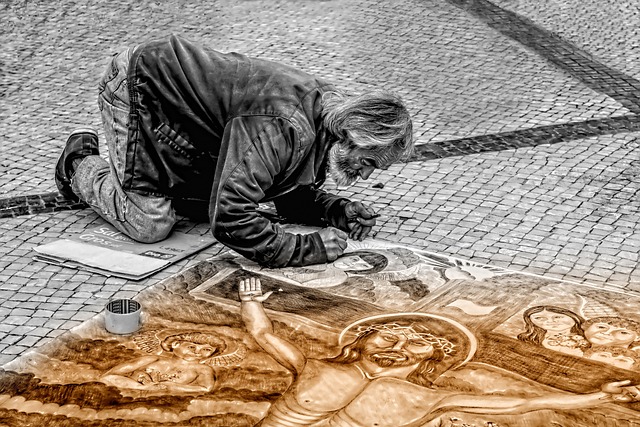# AI Art: Navigating the Future of Visual Expression in a Digitally Transformed World
The advent of artificial intelligence has triggered a profound transformation across various sectors, and the realm of art is no exception. AI art is not merely a trend; it represents a paradigm shift in how we create, perceive, and appreciate visual expression. As technology continues to evolve, artists, critics, and audiences are grappling with the implications of this new creative landscape. This article explores the multifaceted impact of AI on the art world, examining its capabilities, challenges, and the future it promises.
## The Emergence of AI as a Creative Partner
Initially, the intersection of art and technology focused on tools that enhanced traditional artistic methods. However, the rise of AI has introduced a new dimension where machines are not just tools but collaborators in the creative process. Algorithms can generate images, compose music, and even write poetry, blurring the lines between human and machine creativity. For instance, programs like DALL-E and Midjourney utilize deep learning to produce stunning visuals based on textual prompts, enabling users to create artwork that may have been unimaginable just a few years ago.
Moreover, the capabilities of AI extend beyond mere image generation. Artists are increasingly using AI to analyze patterns, styles, and historical data, allowing for a richer understanding of art movements and techniques. This analytical power can lead to innovative practices where AI assists in exploring uncharted territories of creativity. The result is a dynamic interplay where human intuition meets machine learning, fostering a collaborative environment that challenges traditional notions of authorship and originality.
## Redefining Artistic Authorship and Ownership
As AI-generated art becomes more prevalent, questions surrounding authorship and ownership have emerged as critical issues. Traditionally, the artist is seen as the sole creator of a work, but AI complicates this narrative. When a machine generates an artwork based on algorithms trained on thousands of existing pieces, who can claim ownership? This dilemma has sparked debates within the art community, prompting legal experts and ethicists to explore new frameworks for intellectual property rights in the age of AI.
Consider the case of “Edmond de Belamy,” a portrait created by an AI algorithm that was auctioned at Christie’s for an astonishing $432,500. The sale raised eyebrows and prompted discussions about the value of art created by non-human entities. Is the monetary value of AI-generated art reflective of the machine’s creativity or the novelty of its existence? These questions challenge conventional art market dynamics and invite a reevaluation of what constitutes artistic merit in a world where machines can mimic human creativity.
Furthermore, the ethical implications of AI in art creation cannot be overlooked. Artists are concerned about the potential for AI to replicate their styles, leading to questions of authenticity and originality. The fear of being overshadowed by machine-generated works raises significant concerns about the future of human artists. As technology continues to advance, finding a balance between embracing AI as a tool and preserving the unique qualities of human artistry will be essential.
## The Future of AI Art: Opportunities and Challenges
Looking ahead, the future of AI in art presents both exciting opportunities and formidable challenges. On one hand, the integration of AI into the creative process can democratize art-making, allowing individuals without formal training to express themselves. With user-friendly platforms and applications, anyone can create visually stunning works, fostering inclusivity and diversity in artistic expression. This democratization can lead to a richer tapestry of voices and perspectives, expanding the boundaries of what art can be.
On the other hand, the proliferation of AI-generated art raises concerns about the potential dilution of artistic value. As the market becomes saturated with machine-generated pieces, distinguishing between human-made and AI-generated works may become increasingly difficult. This scenario could lead to a devaluation of art, where the uniqueness of individual artistic expression is overshadowed by the sheer volume of AI creations. Artists may find themselves competing not only with each other but also with algorithms capable of producing art at an unprecedented scale.
Moreover, the ethical implications of AI art will require ongoing dialogue and critical examination. As AI continues to evolve, the responsibility of artists, technologists, and policymakers will be to establish ethical guidelines that ensure the integrity of artistic expression. This includes addressing issues of bias in AI algorithms, which can inadvertently perpetuate stereotypes or exclude certain voices from the creative conversation. By fostering an inclusive environment that values diverse perspectives, the art world can harness the power of AI while safeguarding the essence of human creativity.
## Conclusion: Embracing the Unknown
Navigating the future of visual expression in a digitally transformed world necessitates a willingness to embrace the unknown. AI art is not merely a technological advancement; it represents a fundamental shift in how we understand creativity, authorship, and the role of technology in our lives. As artists and audiences grapple with these changes, it is essential to remain open to new possibilities while critically examining the implications of AI in the art world.
The journey ahead will undoubtedly be marked by experimentation, collaboration, and ongoing discourse. By fostering a culture that values both human creativity and technological innovation, we can navigate the complexities of AI art and redefine the future of visual expression. In this evolving landscape, the potential for AI to enhance, challenge, and transform art is limitless, inviting us all to participate in a dialogue that shapes the very essence of what it means to create.

